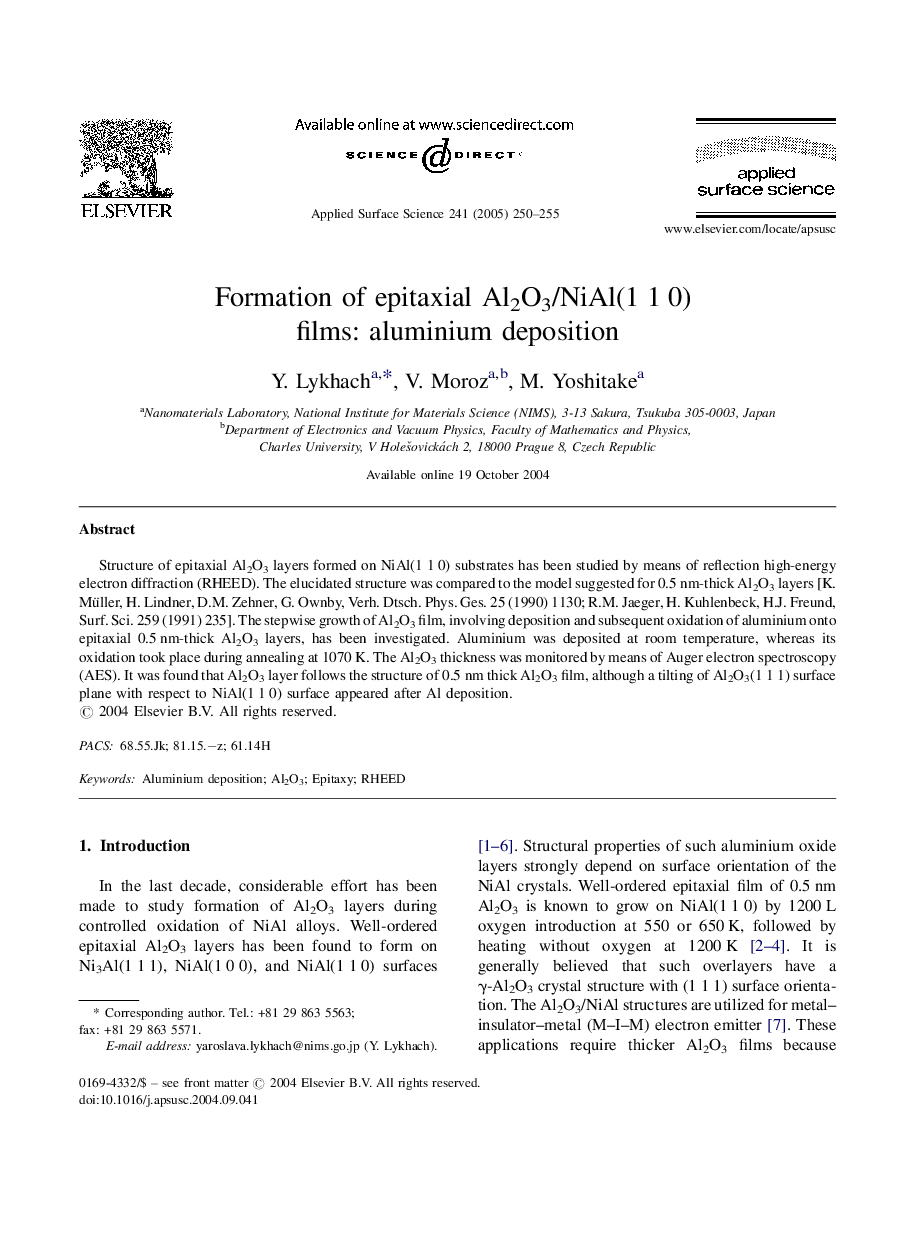| Article ID | Journal | Published Year | Pages | File Type |
|---|---|---|---|---|
| 9567549 | Applied Surface Science | 2005 | 6 Pages |
Abstract
Structure of epitaxial Al2O3 layers formed on NiAl(1Â 1Â 0) substrates has been studied by means of reflection high-energy electron diffraction (RHEED). The elucidated structure was compared to the model suggested for 0.5Â nm-thick Al2O3 layers [K. Müller, H. Lindner, D.M. Zehner, G. Ownby, Verh. Dtsch. Phys. Ges. 25 (1990) 1130; R.M. Jaeger, H. Kuhlenbeck, H.J. Freund, Surf. Sci. 259 (1991) 235]. The stepwise growth of Al2O3 film, involving deposition and subsequent oxidation of aluminium onto epitaxial 0.5Â nm-thick Al2O3 layers, has been investigated. Aluminium was deposited at room temperature, whereas its oxidation took place during annealing at 1070Â K. The Al2O3 thickness was monitored by means of Auger electron spectroscopy (AES). It was found that Al2O3 layer follows the structure of 0.5Â nm thick Al2O3 film, although a tilting of Al2O3(1Â 1Â 1) surface plane with respect to NiAl(1Â 1Â 0) surface appeared after Al deposition.
Related Topics
Physical Sciences and Engineering
Chemistry
Physical and Theoretical Chemistry
Authors
Y. Lykhach, V. Moroz, M. Yoshitake,
